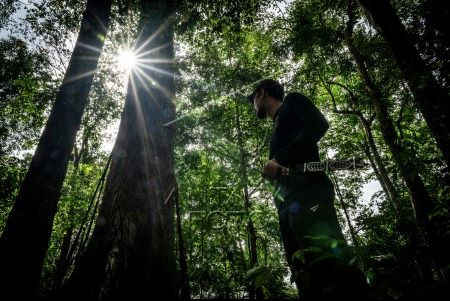Popular Reads
Top Results
Can't find what you're looking for?
View all search resultsPopular Reads
Top Results
Can't find what you're looking for?
View all search resultsProtecting forests through taxonomy for sustainable finance
Given the limited competence of financial institutions in conducting sustainability assessments, the availability of a clear, credible and scientific guide is an important catalyst.
Change text size
Gift Premium Articles
to Anyone
W
illiam Ruckelshaus, the first head of the United States Environmental Protection Agency, once made the following statement: “Nature provides a free lunch, but only if we control our appetites.”
Forests are irreplaceable natural assets for humankind due to their wide array of ecosystem services, such as raw materials provisioning, climate regulation, water purification, flood control, habitat, nutrient cycling and ecotourism.
Natural forests collectively sequester carbon by capturing atmospheric carbon dioxide and transforming it into biomass through photosynthesis. Since biomass of forests offers significant mitigation opportunities, the Intergovernmental Panel on Climate Change (IPCC) classifies afforestation, reforestation, sustainable forest management and agroforestry practices as the main decarbonization strategies in agriculture, forestry and other land use (AFOLU) sectors.
Despite its vital role, forests in Indonesia, equivalent to approximately 10 percent of global forest cover, continue to face direct threats from various economic activities. Global Forest Watch reveals that Indonesia has lost 30.8 million hectares (ha) of its tree cover since 2001 and the majority of the deforestation was triggered by land clearing for commercial commodity expansion according to a study in 2019.
The continual flow of business funding from financial institutions to companies which pose the highest threat to natural forests clearly underscores the inadequate appreciation of forests’ ecosystem services. The Banking On Biodiversity Collapse (BOBC) report revealed that multiple Indonesian banks have been among the largest banks in Southeast Asia that finance business actors with great deforestation risk. Efforts from non-state actors must be enhanced to combat agriculture-driven deforestation and harmonize financial investments with the diverse land-use objectives.
Bank and non-bank financial institutions could show their contribution toward preserving Indonesia's forest areas through their financing activities. The integration of environmental, social and governance (ESG) factors into investment instruments traded on the stock exchange, as well as debtor selection processes by banks enable them to reorient funds into business actors that do not harm forests. Of course, advancing forest-positive finance in Indonesia would not be free from challenges during its implementation.
Variations in sustainability standards among business entities are considered the biggest challenge. The lack of a binding global consensus regarding sustainable forest management criteria that must be met by business actors frequently perplexes assessors at financial institutions.



















